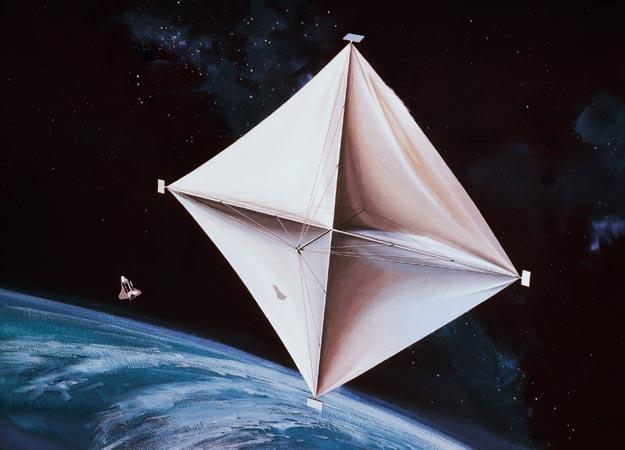Ion Thruster
Light speed might not be attainable, but there are several propulsion systems that are being researched that could propel spaceships at very high rates of speed. One particular propulsion system that has had success is ion propulsion, which simply uses ions to propel the spaceship. NASA is currently working with Ion propulsion and they show that it doesn’t produce a large amount of thrust, but it provides a long constant thrust that could accelerate a spaceship to speeds as high 90,000 miles per hour while only using minimal fuel. This particular propulsion system is being used on satellites, but maybe it will eventually make its way to space vehicles. Another form of propulsion being explored is Ram-jet fusion engines, which can operate longer than ion propulsion because it would runoff the free hydrogen found in deep space. Dr. Michio Kaku describes how this particular design hinges on our capabilities to create a proton-proton fusion process. Dr. Rod Nave shows that proton-proton fusion is essentially the fusion process that powers our sun and the technology needed to for this fusion make take at least another century to develop. The Planetary Society is exploring the idea of solar sails as a form of space propulsion. It works by using a large sail that reflects the light from the sun, which transfers the momentum from the light photons to the sail. This type of propulsion may have a small acceleration, but it will be continuous and can reach high speeds over time. There has also been some advancements in the traditional chemical propulsion that we have used since the beginning of our space exploration. NASA has developed technology and manufacturing methods that have made it possible to attain higher combustion temperatures, which enables more efficient combustion with new chemicals that needed a higher combustion temperature. This could make it possible to use chemical propulsion to get us further in space before we would have to switch to a different propulsion system. No particular propulsion system may be the answer, but a combination of systems could get us into deep space.

Solar Sail
Even though deep space travel for humans is still seems like a thing of science fiction, the human race will continue to make advances to make it possible. In less than 100 years we went from learning to fly to putting a man on the moon, which seemed to be impossible. With the rate at which technology is continuing to get better, I can eventually see the human race traveling into deep space and again doing what seemed to be impossible.
Research
Even though deep space travel for humans is still seems like a thing of science fiction, the human race will continue to make advances to make it possible. In less than 100 years we went from learning to fly to putting a man on the moon, which seemed to be impossible. With the rate at which technology is continuing to get better, I can eventually see the human race traveling into deep space and again doing what seemed to be impossible.
Research